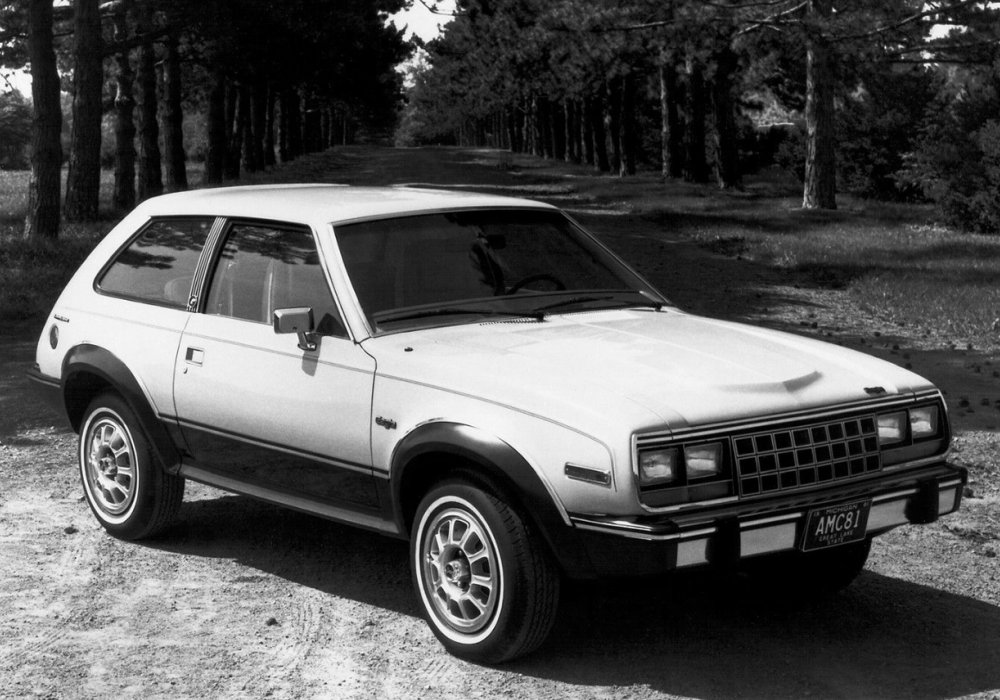Before the term “crossover” entered the automotive lexicon, American Motors Corporation crafted a vehicle that would unknowingly define an entirely new category. The 1981 AMC Eagle Kammback 4.2 emerged as a pioneering fusion of passenger car comfort and off-road capability, challenging conventional vehicle classifications of its era.
This three-door hatchback demonstrated remarkable foresight, introducing full-time four-wheel drive in a passenger car platform decades before it became an industry standard. Its innovative approach to combining everyday practicality with all-weather capability set a blueprint that modern crossovers continue to follow.
Engineering Innovation Meets Practical Design
The Eagle Kammback’s most striking feature wasn’t immediately visible – its revolutionary Quadra-Trac full-time four-wheel-drive system. This sophisticated setup employed a viscous coupling, enabling seamless power distribution between axles without driver intervention. The system’s effectiveness in varying road conditions established new benchmarks for all-weather vehicles.
The three-door hatchback configuration, while unusual by today’s standards, offered a practical balance between compact dimensions and cargo utility. Its raised ride height and robust suspension system provided genuine off-road capability without compromising on-road comfort.
“The Eagle Kammback represented a watershed moment in automotive design. Its full-time 4×4 system was years ahead of its time, and we’re still seeing its influence in modern crossovers.” — James Harrison, Classic Car Restoration Specialist at Heritage Automotive
The integration of passenger car elements with off-road capabilities wasn’t just innovative – it was revolutionary. The independent front suspension coupled with a solid rear axle struck an effective balance between comfort and durability.
Fact!
The AMC Eagle Kammback was one of the first vehicles to use a viscous coupling in its four-wheel-drive system, a technology that later became industry standard in all-weather vehicles.
Power, Performance, and Practicality
At the heart of the Eagle Kammback lay a robust 4.2-liter inline-six engine, delivering 110 horsepower and 278 Nm of torque. While these numbers might seem modest by today’s standards, the engine’s low-end torque characteristics proved ideal for both daily driving and off-road scenarios.
The powertrain options reflected AMC’s practical approach to performance. Both 4-speed and 5-speed manual transmissions were available, each offering distinct advantages:
- 4-speed manual: Optimized for low-speed control and off-road capability;
- 5-speed manual: Enhanced highway efficiency and overall versatility;
- Both variants: Robust design suited for varied terrain conditions;
- Gear ratios: Carefully selected for balance between acceleration and efficiency;
- Maintenance: Straightforward design promoting longevity and reliability.
The Eagle’s performance figures tell an interesting story. The 0-100 km/h time of 14.7 seconds and top speed of 155 km/h weren’t breaking any records, but they demonstrated competence across diverse driving conditions.
Important!
The inline-six engine's durability and low-end torque characteristics made it particularly well-suited for the Eagle's dual-purpose nature, offering reliability in both daily driving and challenging conditions.
Off-Road Heritage and Capability
The Eagle Kammback’s approach to off-road capability set new standards for passenger vehicles. Its full-time four-wheel-drive system proved remarkably capable in challenging conditions, while maintaining on-road manners that surpassed traditional 4x4s of the era.
“I’ve owned my Eagle Kammback since 1983, and it’s still my go-to vehicle for Vermont winters. The way it handles snow and ice is remarkable, even by today’s standards.” — Michael Peterson, Long-term Owner
The suspension setup played a crucial role in the vehicle’s versatility. The independent front suspension provided improved road handling, while the rear solid axle ensured durability and load-carrying capacity. This combination proved particularly effective in varying road conditions.
The engineering team’s attention to ground clearance and approach angles demonstrated understanding of real-world usage requirements. These considerations made the Eagle Kammback genuinely capable in off-road situations while maintaining civilized on-road behavior.
Legacy and Modern Relevance
The Eagle Kammback’s influence extends far beyond its production years. Its concept of combining passenger car attributes with off-road capability essentially created the blueprint for modern crossover SUVs.
The vehicle’s weight of 1,420 kg seems remarkably efficient by today’s standards, particularly considering its robust construction and four-wheel-drive system. This achievement in weight management while maintaining capability remains relevant to modern vehicle design.
Historical Reference!
The AMC Eagle series marked the first mass-produced American passenger car line with four-wheel-drive, predating the modern crossover trend by nearly two decades.
Today’s automotive landscape clearly shows the Eagle Kammback’s influence. The proliferation of crossover vehicles across all market segments validates AMC’s pioneering vision.
Visionary Design, Enduring Impact
The 1981 AMC Eagle Kammback represented more than just another vehicle variant – it demonstrated remarkable foresight into future automotive trends. Its combination of passenger car comfort with genuine all-weather capability created a template that dominates today’s automotive market.
The Eagle Kammback’s legacy lives on in every modern crossover, though few recognize its pioneering role. As automotive design continues to evolve, the principles established by this innovative vehicle remain surprisingly relevant.
Pros and Cons
| Advantages | Disadvantages |
|---|---|
| Revolutionary full-time 4WD system with advanced viscous coupling | Fuel economy limitations typical of the era |
| Robust 4.2L inline-six engine with strong low-end torque | Limited rear passenger access due to three-door design |
| Practical combination of passenger car comfort and off-road capability | Modest acceleration performance by modern standards |
| Innovative suspension design balancing comfort and capability | Parts availability can be challenging for restoration |
| Historical significance as a crossover pioneer | Weight impact on overall performance |
| Proven durability and long-term reliability | Limited production numbers affecting collectibility |
| Effective all-weather performance | Period-typical interior materials quality |
The AMC Eagle Kammback 4.2 stands as a testament to innovative automotive design, showcasing how forward-thinking engineering can shape future vehicle categories. While it may have faced certain limitations typical of its era, its influence on modern vehicle design cannot be understated. For collectors and enthusiasts, it represents not just a classic car, but a pivotal moment in automotive history that bridged the gap between conventional passenger cars and dedicated off-road vehicles.

